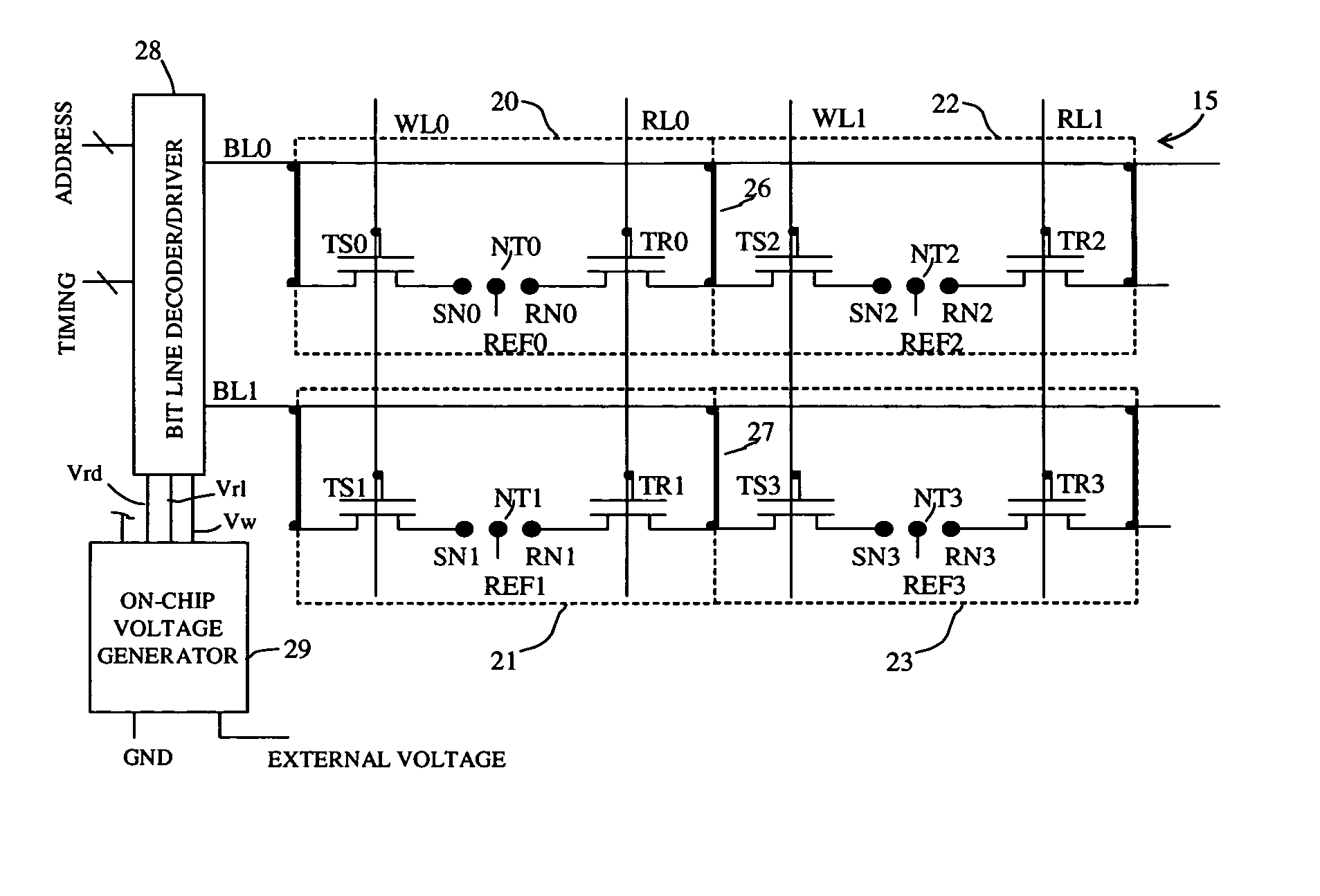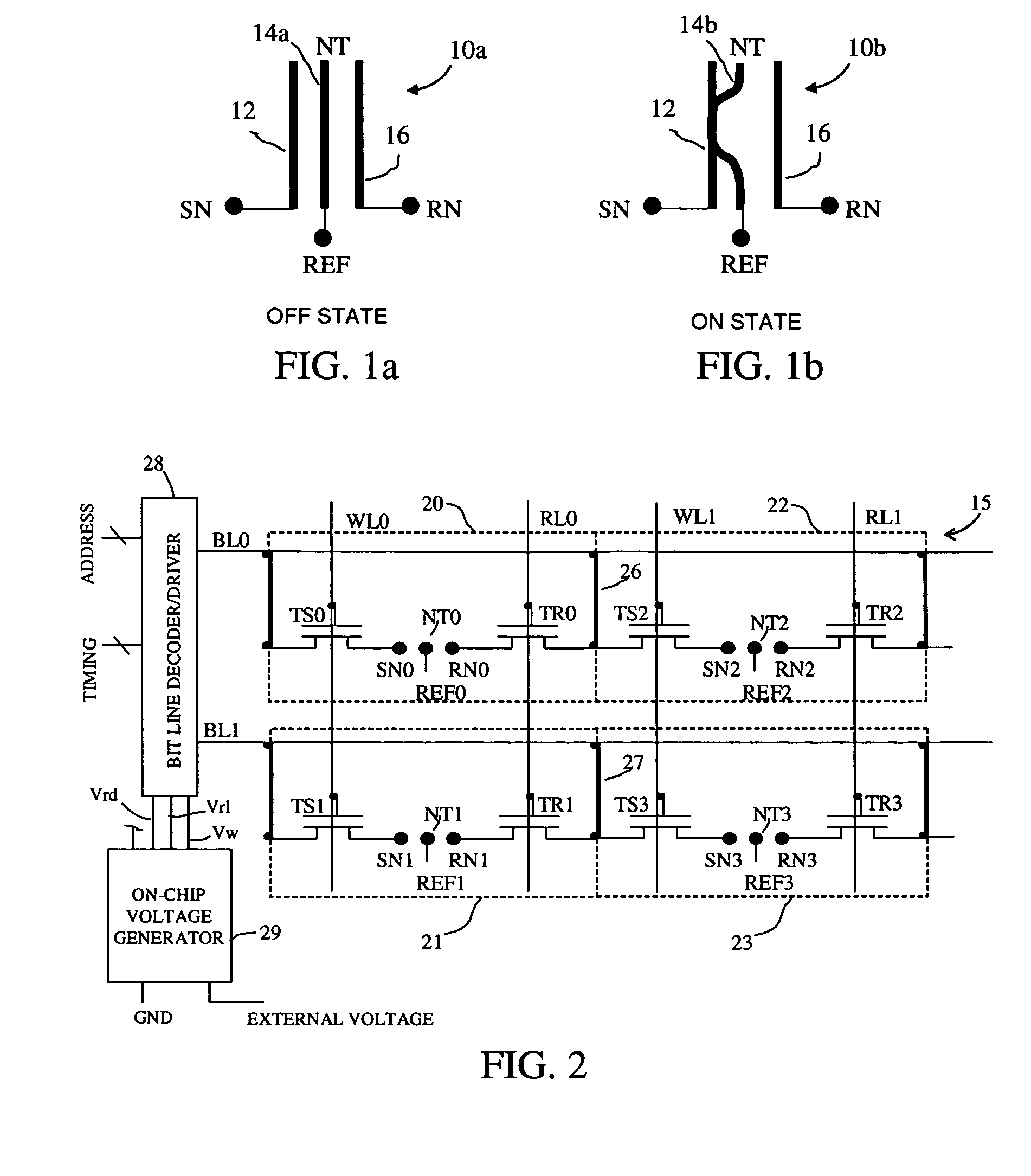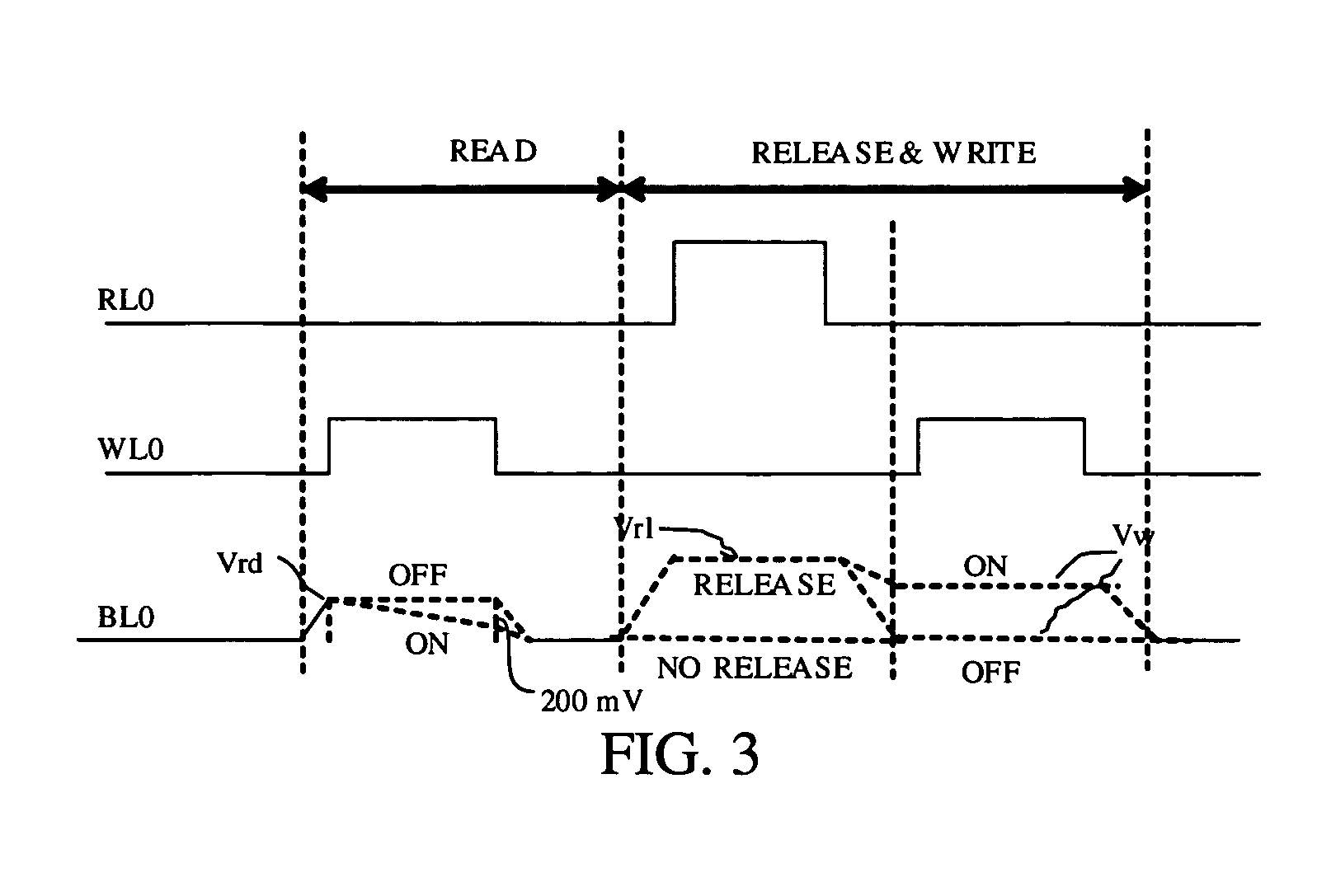Nram bit selectable two-device nanotube array
a nanotube array and nanotube technology, applied in the field of nonvolatile ram structures, can solve the problems of slow speed relative to dram or sram, long write cycles (ms), and low cost of rom,
- Summary
- Abstract
- Description
- Claims
- Application Information
AI Technical Summary
Problems solved by technology
Method used
Image
Examples
Embodiment Construction
[0041] Preferred embodiments of the invention provide a non-volatile ram cell and array structure in which information state is manifested by the physically deflected position of a nanotube (NT) switching element. The non-volatile ram cells are bit selectable for read and write operations. The NT switching component has two states: an On state and an Off state. The NT element may be caused to deflect to one state or the other through transistor interface circuitry; that is, the surrounding circuit does not access the NT element directly but instead accesses transistor devices to set or release the NT element from one state or the other.
[0042]FIGS. 1A and B depict an NT switching element. The devices include a set node 12 a release node 16 and a nanotube element positioned in between. The NT element generally extends perpendicularly to the nodes 12 and 16. In preferred embodiments the NT element is formed from a fabric of nanotubes, as is described further below. The NT element in t...
PUM
 Login to View More
Login to View More Abstract
Description
Claims
Application Information
 Login to View More
Login to View More - R&D
- Intellectual Property
- Life Sciences
- Materials
- Tech Scout
- Unparalleled Data Quality
- Higher Quality Content
- 60% Fewer Hallucinations
Browse by: Latest US Patents, China's latest patents, Technical Efficacy Thesaurus, Application Domain, Technology Topic, Popular Technical Reports.
© 2025 PatSnap. All rights reserved.Legal|Privacy policy|Modern Slavery Act Transparency Statement|Sitemap|About US| Contact US: help@patsnap.com



